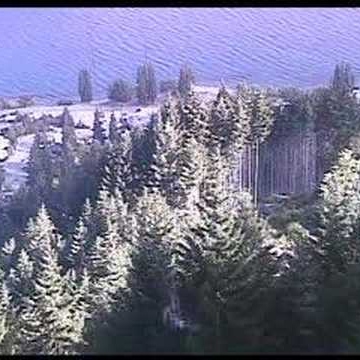Michael R Max
age ~70
from Euclid, OH
- Also known as:
-
- Michael M Ax
- Micheal Max
- Cindy Peterman
- Cynthia Peterman
- Phone and address:
-
16813 Grovewood Ave, Cleveland, OH 44110
(216)3835179
Michael Max Phones & Addresses
- 16813 Grovewood Ave, Cleveland, OH 44110 • (216)3835179 • (216)4816504
- Euclid, OH
- 2316 Boyds Creek Hwy, Sevierville, TN 37876 • (865)4286763
- Bradenton, FL
- Lakeline, OH
- Stow, OH
Isbn (Books And Publications)

Natural Gas Hydrate in Oceanic and Permafrost Environments
view sourceAuthor
Michael D. Max
ISBN #
0792366069
Name / Title
Company / Classification
Phones & Addresses
Director
Maxsystems, LLC
111 5 Ave N, Saint Petersburg, FL 33701
2457 39 Pl NW, Washington, DC 20007
2457 39 Pl NW, Washington, DC 20007
President, Secretary, Vice President
Silver Sands Beach & Racquet Club Three Condominium Association, Inc
6650 Sunset Way, Saint Petersburg, FL 33706
6595 Sunset Way, Saint Petersburg, FL 33706
6595 Sunset Way, Saint Petersburg, FL 33706
Director
SPECIAL AQUATIC SERVICES, CORP
6650 Sunset Way 303, Saint Petersburg, FL 33706
6650 Sunset Way #303, Saint Petersburg, FL 33706
6650 Sunset Way #303, Saint Petersburg, FL 33706
ManagingDirector, Owner
Marine Desalination Systems, LLC
Whol Water Purification Equipment · Research & Development in Biotechnology
Whol Water Purification Equipment · Research & Development in Biotechnology
1601 3 St S, Saint Petersburg, FL 33701
(727)8213993, (727)8214430
(727)8213993, (727)8214430
Us Patents
-
Atmospheric Moisture Harvesting
view source -
US Patent:20100307181, Dec 9, 2010
-
Filed:Jun 9, 2009
-
Appl. No.:12/481352
-
Inventors:Michael D. Max - St. Pete Beach FL, US
-
International Classification:F25D 21/14
-
US Classification:62291
-
Abstract:The invention relates to atmospheric moisture harvesting. In particular, the invention capitalizes on the recognition that the air outside of a building usually has higher relative humidity than the air inside of the building. Therefore, the present invention relocates and/or modifies the configuration of an atmospheric moisture harvester such that more-moisture-laden, higher-relative-humidity outdoor air lows over the cooled water condensation surface of the atmospheric moisture harvester as the source for water to be delivered and consumed safely inside a dwelling or building. This increases the efficiency of atmospheric moisture harvesting and, at the same time, maintains the ability to access water obtained by the atmospheric moisture harvester from inside the building, thereby fostering ease of use.
-
Accelerated Hydrate Formation And Dissociation
view source -
US Patent:20100113845, May 6, 2010
-
Filed:Oct 29, 2009
-
Appl. No.:12/608464
-
Inventors:John P. Osegovic - St. Petersburg FL, US
Ian M. Slattery - St. Petersburg FL, US
Michael D. Max - St. Pete Beach FL, US -
International Classification:C07C 9/04
C07C 9/06
C07C 9/08 -
US Classification:585 15
-
Abstract:The invention relates to using gas hydrate to separate specific gases from a gas mixture. In particular, compound hydrate is formed from a mixed gas feedstock to concentrate one or more desired gas species in the hydrate phase and the remainder in the gas phase. The hydrate is then separated from the gas phase and dissociated to produce a gas stream concentrated in the desired species. Additives that accelerate the growth of hydrate and a defoaming agent are added to change the rate of reaction and eliminate hard to break foam produced by the catalyst to enhance total throughput through the process. The addition of some materials can result in changes in the density of the hydrate product, which can be useful for optimizing the separation of hydrate from unreacted liquid and/or rejected gas.
-
Water Handling System
view source -
US Patent:20090321435, Dec 31, 2009
-
Filed:Jun 30, 2008
-
Appl. No.:12/164206
-
Inventors:Michael D. Max - St. Pete Beach FL, US
-
International Classification:B65D 30/20
-
US Classification:220 93
-
Abstract:A water handling system features collapsible containers which have ports on either side. The ports allow multiple containers to be connected together so that they can be filled in sequential order. The ports have quick-connect fittings by means of which a cap, an inter-container connector, and/or a spout member can be connected to the containers. Dissolving electrolyte-providing members are suitably provided to be inserted into the containers so that pure water collected, e.g., from an atmospheric moisture harvester can be remineralized.
-
Hydrate-Based Desalination Using Compound Permeable Restraint Panels And Vaporization-Based Cooling
view source -
US Patent:20080053882, Mar 6, 2008
-
Filed:May 8, 2007
-
Appl. No.:11/797832
-
Inventors:Michael Max - St. Pete Beach FL, US
-
International Classification:B01D 35/18
-
US Classification:210184000
-
Abstract:Desalination apparatus based on porous restraint panels fabricated from a number of different layers of metal, thermoplastic, or other substances are used as sophisticated heat exchangers to control the growth of gas hydrate. The gas hydrate is produced after infusion of liquid hydrate-forming material into water to be treated, which liquid hydrate-forming material can also be used to carry out all the refrigeration necessary to cool seawater to near the point of hydrate formation and to cool the porous restraint panels. Hydrate forms on and dissociates through the porous restraints. The composite restraint panels can also be used in gaseous atmospheres where, for instance, it is desired to remove dissolved water.
-
Atmospheric Moisture Harvesters
view source -
US Patent:20070079624, Apr 12, 2007
-
Filed:Oct 7, 2005
-
Appl. No.:11/245130
-
Inventors:Michael Max - St. Pete Beach FL, US
-
International Classification:F25D 21/00
F25D 21/14 -
US Classification:062285000, 062272000
-
Abstract:Improved apparatus and methods for use in atmospheric moisture harvesters are disclosed. In particular, sectored or zoned cooling/condensation surfaces to optimize cooling efficiency are disclosed. In one embodiment, cooling is provided by dual-refrigerant, buffered cooling cells. In another embodiment, cooling is provided by thermoelectric cooling devices. Where thermoelectric cooling devices are used, an airway duct that covers both the cool side and the warm side of the devices can be provided, such that an airflow system that is driven by the difference in density between cooled, de-moisturized air and warmed air is established. Localized temperatures and moisture levels are monitored so that cooling can be adjusted as necessary to provide optimal, most energy-efficient condensation of moisture.
-
Hydrate-Based Desalination Using Compound Permeable Restraint Panels And Vaporization-Based Cooling
view source -
US Patent:20070284318, Dec 13, 2007
-
Filed:Apr 13, 2007
-
Appl. No.:11/785033
-
Inventors:Michael David Max - St. Pete Beach FL, US
-
International Classification:C02F 1/20
-
US Classification:210774
-
Abstract:Desalination apparatus based on porous restraint panels fabricated from a number of different layers of metal, thermoplastic, or other substances are used as sophisticated heat exchangers to control the growth of gas hydrate. The gas hydrate is produced after infusion of liquid hydrate-forming material into water to be treated, which liquid hydrate-forming material can also be used to carry out all the refrigeration necessary to cool seawater to near the point of hydrate formation and to cool the porous restraint panels. Hydrate forms on and dissociates through the porous restraints. The composite restraint panels can also be used in gaseous atmospheres where, for instance, it is desired to remove dissolved water.
-
Hydrate-Based Desalination Using Compound Permeable Restraint Panels And Vaporization-Based Cooling
view source -
US Patent:20080028781, Feb 7, 2008
-
Filed:May 8, 2007
-
Appl. No.:11/797833
-
Inventors:Michael David Max - St. Pete Beach FL, US
-
International Classification:F25B 27/00
F25D 25/00 -
US Classification:622381, 62 62
-
Abstract:Desalination apparatus based on porous restraint panels fabricated from a number of different layers of metal, thermoplastic, or other substances are used as sophisticated heat exchangers to control the growth of gas hydrate. The gas hydrate is produced after infusion of liquid hydrate-forming material into water to be treated, which liquid hydrate-forming material can also be used to carry out all the refrigeration necessary to cool seawater to near the point of hydrate formation and to cool the porous restraint panels. Hydrate forms on and dissociates through the porous restraints. The composite restraint panels can also be used in gaseous atmospheres where, for instance, it is desired to remove dissolved water.
-
Hydrate-Based Reduction Of Fluid Inventories And Concentration Of Aqueous And Other Water-Containing Products
view source -
US Patent:20060273036, Dec 7, 2006
-
Filed:Aug 16, 2006
-
Appl. No.:11/504659
-
Inventors:Michael Max - St. Pete Beach FL, US
John Osegovic - Tampa FL, US -
International Classification:C02F 1/52
-
US Classification:210702000
-
Abstract:Toxic waste waters polluted with high levels of chemical byproducts of various industrial processes (e.g., waste water held in industrial holding ponds) are treated using gas hydrate to extract and remove fresh water from the polluted water, thus reducing the volume of toxic waste water inventories. Extracting fresh water by forming and removing the hydrate raises the concentration of dissolved materials in the residual concentrated brines to levels at which the residual fluid is suitable for use as an industrial feedstock. Furthermore, so raising the concentration of the residual brine will cause certain mineral species to precipitate out of solution, which mineral species are separated from the fluid and may be put to other uses, as appropriate. Food products are also advantageously concentrated by means of gas hydrates.
Resumes

Engineer
view sourceWork:
Engineer

Michael Max
view source
Michael Max
view source
Michael Max
view sourceLocation:
United States

Michael Max
view sourceLocation:
United States
Classmates

Michael Max
view sourceSchools:
Seeger Memorial Junior High School Pine Village IN 1975-1979
Community:
Ann Chrisman, Donna Tinsley, Clarence Shuey, J Taylor, John Turner

Michael Max
view sourceSchools:
Wethersfield High School Wethersfield CT 1985-1989
Community:
Patricia Ahern

Michael Max
view sourceSchools:
Timiskaming District Secondary School New Liskeard Morocco 1969-1973

Michael (Max) Torres | Be...
view sourcePlaxo

Michael Max
view sourceNesøya, Norway

Michael Max
view sourceAttentionFilm

Michael Max
view sourceDelhi
Myspace
Youtube
Flickr

Michael Max
view source
Michael Max
view source
Michael Max
view source
Michael Max
view source
Michael Max
view source
Michael Max
view source
Michael Max
view source
Michael Max
view sourceGoogleplus

Michael Max
Education:
Emerson College - Theatrical lighting desing (bfa)

Michael Max

Michael Max

Michael Max

Michael Max

Michael Max

Michael Max

Michael Max
Get Report for Michael R Max from Euclid, OH, age ~70
















